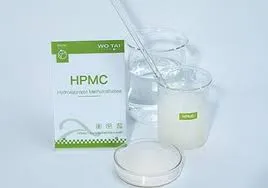
Nov . 27, 2024 13:38 Back to list
Hydroxyethylcellulose Applications and Benefits in Various Industrial Fields
Hydroxyethylcellulose-Based Materials Versatility and Applications in Modern Industries
Hydroxyethylcellulose (HEC) is a non-ionic, water-soluble polymer derived from cellulose, a natural polymer abundantly found in plant cell walls. It has gained significant attention across various industries, including food, pharmaceuticals, cosmetics, and construction, primarily due to its unique properties. This article explores the versatility of hydroxyethylcellulose-based materials, examining their composition, properties, and diverse applications.
Composition and Properties of Hydroxyethylcellulose
HEC is synthesized through the etherification of cellulose, which modifies its structure to enhance solubility in water. The degree of substitution, which refers to the number of hydroxyl groups replaced by hydroxyethyl groups, can be controlled during synthesis. This degree of substitution affects the viscosity, solubility, and gel-forming capabilities of HEC, making it adaptable for various applications.
One of the most notable properties of hydroxyethylcellulose is its thickening capability. When mixed with water, HEC forms a viscous solution, which can be adjusted according to the concentration used. This property is particularly beneficial in applications that require controlled rheology, allowing the formulation of products that are easy to handle and apply.
Moreover, HEC exhibits excellent stability across a wide pH range, making it suitable for use in various formulations, from acidic to alkaline environments. Its ability to form gels and film enhances its utility in a variety of products, providing not only stability but also an improved sensory experience for users.
Applications of Hydroxyethylcellulose in Different Industries
hydroxyethylcellulose based

1. Pharmaceuticals HEC is widely used in the pharmaceutical industry as a thickening agent and stabilizer in liquid formulations. It is utilized to enhance the viscosity of syrups, suspensions, and gels, ensuring that active ingredients remain evenly distributed. Additionally, HEC's film-forming properties make it an excellent excipient in tablet coatings and controlled-release formulations, improving the bioavailability of certain drugs.
2. Cosmetics and Personal Care In the cosmetics industry, hydroxyethylcellulose serves as a key ingredient in products like lotions, creams, and shampoos. Its thickening and emulsifying properties enable the creation of luxurious textures, while its ability to form films enhances the long-lasting effects of skin and hair care products. Moreover, being a non-ionic polymer, it is often well-tolerated by the skin, reducing the likelihood of irritation.
3. Food Industry The food industry has also embraced the use of hydroxyethylcellulose for its thickening and stabilizing properties. HEC can be found in sauces, dressings, and dairy products, where it improves texture and helps maintain product viscosity. It acts as a fat replacer, providing creaminess without the calories, making it an appealing choice for healthier food formulations.
4. Construction In construction, hydroxyethylcellulose is used as a thickener and stabilizer in cement-based products. It improves the workability of mortars and plasters, making them easier to apply and reducing water loss during the curing process. Additionally, HEC enhances the adhesion of these materials, leading to better performance and durability of structures.
5. Adhesives and Sealants HEC is also employed in the formulation of adhesives and sealants due to its excellent thickening properties. It helps achieve the desired viscosity, ensuring that the adhesive can be easily applied while maintaining its performance characteristics. Its water-retention ability also aids in prolonging the working time of adhesives, allowing for greater flexibility during application.
Conclusion
In summary, hydroxyethylcellulose is a versatile and valuable polymer that finds application across numerous industries due to its unique properties. Its ability to act as a thickener, stabilizer, and film-former makes it an essential ingredient in pharmaceuticals, cosmetics, food, construction, and adhesives. As industries seek innovative formulations that offer improved performance and user experience, the demand for hydroxyethylcellulose-based materials will likely continue to grow. With ongoing research and development, the potential applications for HEC are vast, paving the way for exciting advancements in multiple sectors.
-
What is HPMC?
NewsJun.06,2025
-
Understanding Redispersible Powder: The Future of Construction Materials
NewsJun.06,2025
-
Understanding RDP Powder: The Ultimate Solution for Your Construction Needs
NewsJun.06,2025
-
Pure HPMC: The Ideal Solution for Modern Construction and Building Materials
NewsJun.06,2025
-
Methyl Hydroxyethyl Cellulose: A Versatile Chemical Compound
NewsJun.06,2025
-
Hydroxyethyl Cellulose Power: The Essential Chemical for Various Industries
NewsJun.06,2025







